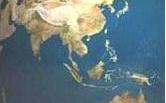The school of astrology known as Cosmobiology was founded in the late 1930s by a German astrologer named Reinhold Ebertin (1901-1988) who was a student of the founder of the Hamburg School of Astrology Alfred Witte (1878-1941).
The main difference between the two schools is that Cosmobiology rejects the hypothetical Trans-Neptunian objects used by the Hamburg School and later Uranian astrologers. Another difference is the significant expansion of Cosmobiology into medical astrology, Dr Ebertin being a physician.
Cosmobiology continued Alfred Witte's later primary emphasis on the use of astrological midpoints along with the following 90° dial , in cosmobiological analysis, planets are inserted into a special type of horoscope often referred to as a 'Cosmogram' (derived from the Uranian 90° dial chart) and delineated
The primary reference/research text for Cosmobiology was first published in 1940 by the German astrologer Reinhold Ebertin. The name of the book is The Combination of Stellar Influences. The original German title is Kombination der Gestirneinflusse. Its foundations were derived largely from the early versions of the "Regelwerk für Planetenbilder" by Alfred Witte, and then further built upon by Ebertin and colleagues.
What is noteworthy about both Cosmobiology and Uranian Astrology are their emphasis on critical analysis and testing by observing more clearly measurable or observable astrological correlations, rather than to simply perpetuate observations or assumptions written in historical astrological texts, a problem leading to widespread criticism of mainstream Classical Astrology.
For this reason, both Uranian Astrology and Cosmobiology are more likely to qualify as sciences, despite widespread historical biases against astrology due to the ambiguities of the still widely-used. Some have speculated that the term "Cosmobiology" was coined specifically to divorce its precepts from the manifold ambiguities of, and subsequent widespread biases against, Classical Astrology.
The origins of the 90° dial have been accounted for in various ways by various people. In the 20th century, according to available documents, the 90° dial was first used by practitioners of Hamburg School astrology, i.e. by followers of the teachings of the innovative astrologer, Alfred Witte. Ludwig Rudolph, one of Witte's most enthusiastic and dedicated students, used the 90° dial in his astrological practice, as did cosmobiologist Reinhold Ebertin. Use of such a tool, or the principles it is based on, prior to the time of Witte, Rudolph, and Ebertin is not impossible, yet it is primarly Rudolph and Ebertin who popularized its usage in recent times.
Thus the 90° dial once again brought the important 8th harmonic angles back into consideration, revealing major personal talents indicated by the natal chart, and major events triggered by solar arc directions and transits, all in a quickly and easily detectable format.
This can be summarized in other words -- each round of the 90° begins with 0° of a cardinal sign (Aries starting at 0°, Cancer at 90°, Libra at 180°, and Capricorn at 270°).
Sunday, September 03, 2006
Subscribe to:
Post Comments (Atom)

No comments:
Post a Comment